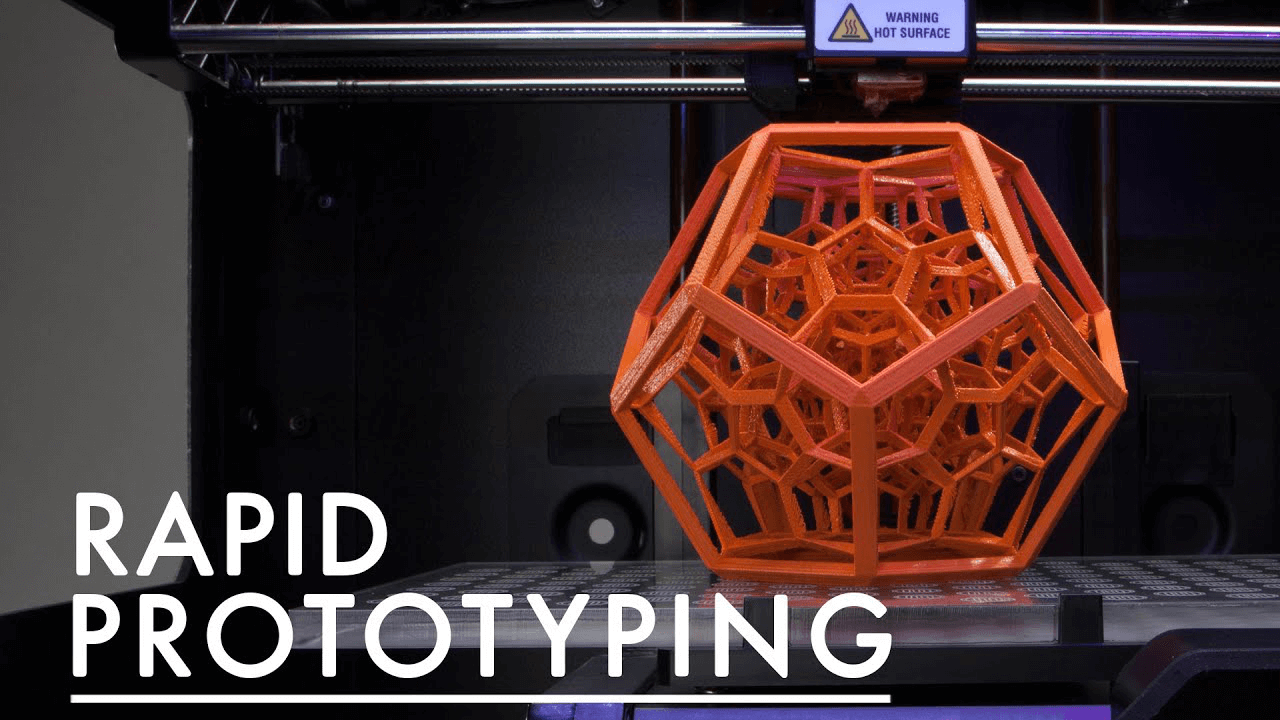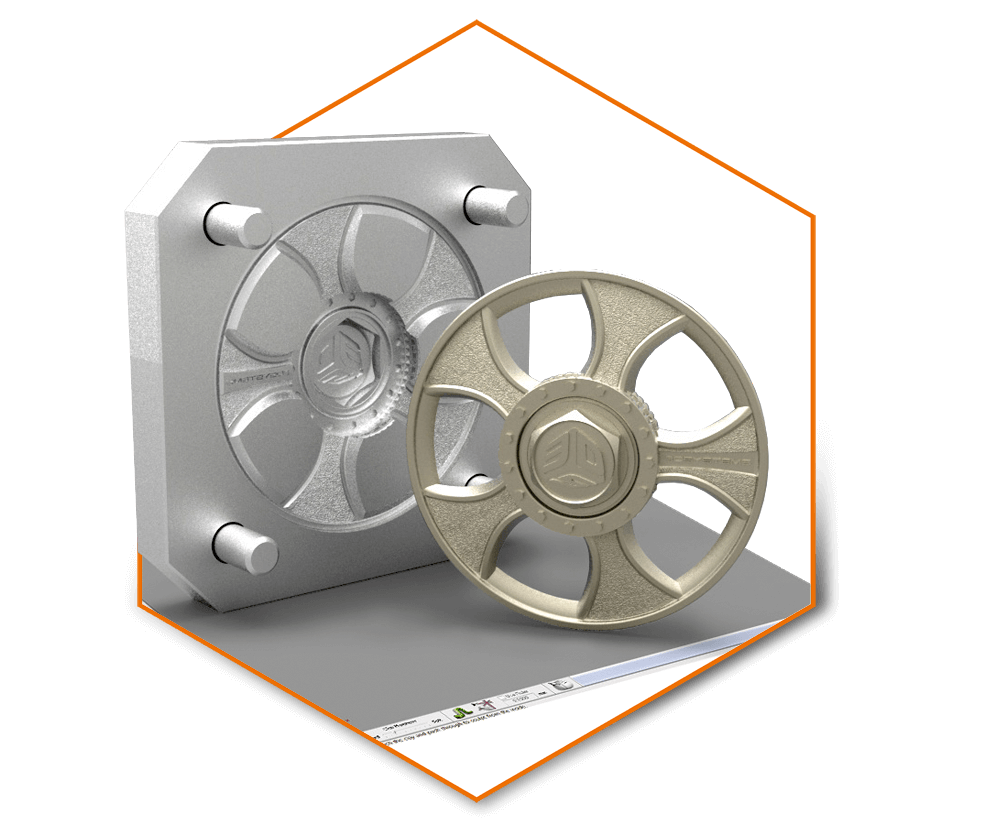5 Factors for Choosing Professional Rapid Prototyping Method in 2020
2020-06-07Professional Rapid Prototyping: 5 Technique Selection Factors
A professional rapid prototyping manufacturer fully comprehends the fact that the failure or success of the prototype greatly depends upon the selection of prototyping techniques. When it comes to rapid prototyping, you have several ways to make up the product design.
You can either go with the simple cardboard mock-ups or the full functional machine assembled product. For modern-day products, prototyping has become imperative. This is crucial for new product development.
Rapid prototyping offers the facility to validate your design. It provides you with a rough model, thus allowing you to test its functionality. Moreover, you would get a précised idea of how your product would look, feel, and work in a real-time environment.
In this blog post, we are going to talk about part-base prototypes. In simpler words, we will tell you how you can use individual parts to create a system-level prototype.
Five Key Factors for Professional Rapid Prototyping Process
Since every product is unique, thus it will offer unique prototyping experience. The difference in every product, project, and product design elements, needs proper consideration.
A certain prototype that worked well for an XYZ product, might not generate the same effective results of your product. Therefore, you need to consider the five key factors below to make the right decision.
- Purpose
- Quality
- Quantity
- Complexity
- Cost
Let’s look deep into these factors and understand why they are important for choosing your next prototyping process.

Purpose
According to Ulrich and Eppinger, there are four reasons for creating a prototype within the engineering and development of product design as well as the product. These four reasons include communication, learning, milestones, and integration.
The purpose of prototyping varies depending on the development stage of the product. Generally, there are four different product development stages. Every stage of product development has its own features as well as the functionality required to eliminate any sort of risk.
This would give away the fidelity type of the prototype i.e. low-fidelity or high-fidelity. The first aspect of the project prototype purpose would depend upon either the risk mitigation exercises or the planned tests.
For instance, customer interaction feedback, or test types, etc. In case, the prototype is going to go through rigorous testing, then it is important to focus on the material. After all, the material would be a deciding factor in choosing the rapid prototyping technique.
Next, you need to focus on the functional aspect of the prototype. The selection and assembling would greatly depend upon the functional expectations of the prototype. Such as, do you want any moving part of your plan to perform functional testing.
It is highly less likely that your prototype becomes successful without any tweaks. Thus, you need to consider the changes and modification factors in your mind. It is important to consider how easy or difficult it would be to make changes to the prototype.
Doing this would also aid in deciding the right prototyping technique.
The Product Development States
Product Clarifying and Planning Task
This is the stage where you will have to provide early proof of concepts. Use industrial design prototypes, demonstrations or mock-ups.
Prototyping Technique
- 3D Printed Parts
- Carboard Mockups
- CNC Machined Foam Models
- Assemblies (SLS, SLA, FDM, etc)
Conceptual Design
At the conceptual stage, you generally require scaled parts. In some cases, you would need assemblies of the design as well as limited functionality and user interface.
To get the shape, and feel of the product, you can use the FDM part. In case, you want more accuracy, you would have to move to the next level of 3D printing. Either choose the SLS, or go with the SLA. You also have the option of poly jet parts.
In case, you want metal parts, then using CNC machine at this stage would be an excellent thing to do. Furthermore, you can even consider sheet metal fabrication. However, sheet metal fabrication works in limited situations.
Embodiment Design
In this phase, you would be exploring the full functionality of the prototype. A professional rapid prototyping manufacturer would be looking into its fit, form, and functions. Therefore, focusing on details is imperative. At this stage, the prototypes would be as similar to the final product as possible.
They would be containing several parts. Also, the testing phase expands here. You cannot limit your self to just a single testing technique. On the contrary, you would be needing different units for different testing purposes.
You would also be considering the final technique for manufacturing at this stage. The reason being, you would have to stimulate it eventually. Also, focus on high-resolution printing such as SLA and SLS for plastic parts.
Paying heed to vacuum casting is also important. Both the DMLS and SLM parts are perfect for simulating casting parts.
Detailed Design
Any prototype developed in this phase would go for functional testing. Moreover, it would be used for pre-production pilot runs.
Professional rapid prototyping manufacture would use vacuum casting to prototype injection molding parts. In the case of machined plastic parts, they would be using the 3D printing technique.
Quality
As we mentioned above, the product accuracy and fidelity required would dictate the type of post-processing or process, you would need for the prototype. You need to focus on the quality of your prototype as well.
Although, high-fidelity prototypes are expensive, however, professional rapid prototyping manufacture consider them as a return on investment. For instance, you want to have a thread feature, we recommend using SLA in instead of the FDM. Unfortunately, SLA would cost you more.
Prototype Usage
The type of technology you use would also depend upon prototype usage. For example, if you plan to use the parts frequently, you should not consider self-tapping holes or 3D printed threaded holes. On the contrary, it would be used to opt for the metal inserts or machined inserts.
Material Selection
The quality of the prototype greatly depends upon the raw material. So, you need to pay close heed to the material selection aspect of the development phase. We would not recommend additive manufactured parts, especially when there is a link between the certain material properties and the functional elements of the prototype.
See the table below for the basic material choice for different manufacturing techniques.
| 3D printing | CNC | Vacuum casting |
|
TPU, ASA, ULTEM, ABS, PLA, Nylon |
PEEK, Polycarbonate, Nylon, ABS | Nylon HT, ABS
ABS, Nylon Nylon HT |
| Inconel, Titanium, Stainless Steel, Aluminum | Brass, Titanium, Stainless Steel, Aluminum | N/A |
It is important to consider the tolerance of prototypes parts especially when a certain prototype compromise of more than one. Tolerance consideration will also offer ease of integration.
Quantity
Another important factor that plays a vital role in deciding the type of prototyping technology is quantity. There are certain techniques that would be cost-effective for smaller quantities and vice versa.
See the following rules that apply.
Plastic Parts
| Prototype processes | |||
| Plastic parts | Quantity | ||
| Low (1's) | Medium (10's) | ||
| Size | Large | 3D printing | CNC Machining
Vacuum Casting |
| Small | 3D printing | CNC machining (simple) 3D printing (complicated) |
|
Metallic parts
| Prototype processes | |||
| Metallic Parts | Quantity | ||
| Low (1's) | Medium (10's) | ||
| Size | Large | CNC machining | CNC machining |
| Small | 3D Printing
CNC machining |
Investment Casting
CNC machining |
|
Complexity
The complexity of the product would help aid the rapid prototype process selection process. Different processes offer different complexity. You just need to focus on the one that would suit your prototype requirement.
Cost
Lastly, you need to focus on the resources available. After all, the prototype and the resources go hand-in-hand. You need to consider the man-hours, the money, and the time you would require to create a high-quality prototype.
Focusing on these aspects would also help you choose the right prototyping technique.

Take Away
As a professional rapid prototyping manufacturer, we keenly focus on the above 5 key factors. We fully understand that choosing the right prototyping technique would yield high-quality results. Therefore, we pay close attention to the purpose of your prototype.
In addition, we would pay close attention to the quality especially when it needs to be performed in a real-time environment. Our state-of-the-art technology helps us in handling prototyping of all sizes and shapes.
We have the ability to handle low-volume prototyping as well as mass production without having any difference in terms of quality and perfection. What more is that we choose the prototyping technique while keeping in mind the cost and the complexity of your design.
After all, every technique cannot produce high-quality, sophisticated, and complex designs. To learn more about us click here.




